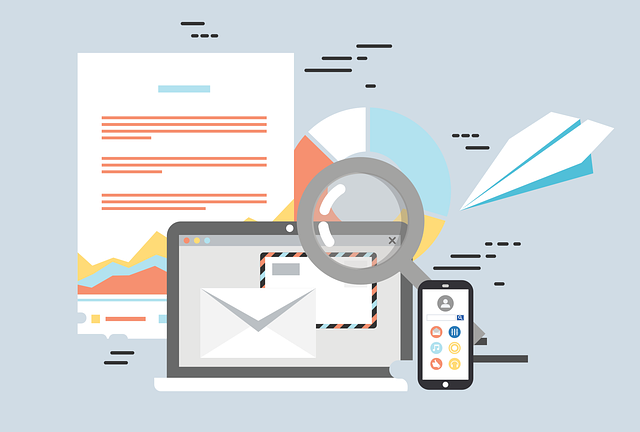By 2025, creating high-performance web applications that scale is not just a technical necessity — it’s a competitive necessity. Businesses are under increasing pressure to deliver digital products that aren’t just responsive and fast but scalable and maintainable to expanding sets. That’s where the MEAN stack — MongoDB, Express.js, Angular, and Node.js — has become one of the most effective and flexible full-stack web development frameworks.
The power of the MEAN stack comes from its homogeneous JavaScript foundation, which allows development teams to employ a single language throughout the entire application — be it the client interface, backend backend logic, or database operations. This consistency results in fewer development hours, improved collaboration, and less context-switching-induced bugs.
In addition, with agile development and continuous deployment becoming standard among software teams, light weight of MEAN stack, non-blocking architecture, and strong open-source community make it particularly well-suited for today’s product lifecycles. Startups and businesses alike are now turning towards MEAN not just for MVPs but for developing production-quality platforms keeping long-term scalability in view.
Key Advantages Which Make MEAN Ideal for Scalability
When scalability is a key priority for modern web applications, the MEAN stack offers a distinct advantage due to its modular, lightweight, and full-stack JavaScript architecture. Each component — MongoDB, Express.js, Angular, and Node.js — contributes unique capabilities that simplify scaling both vertically (increasing power per server) and horizontally (utilizing more servers).
For businesses aiming to build fast, scalable, and maintainable web applications in 2025, one of the smartest early decisions is to hire MEAN Stack developer talent with proven experience in modern web architecture.
Integrated JavaScript Environment
One of the key benefits for scalability of MEAN is that it utilizes JavaScript on both client and server sides. This not only reduces the cognitive effort on developers’ part but also makes it easier to hire and onboard. The teams can use one set of language skills yet leverage advanced features like Node.js non-blocking I/O and Angular two-way data binding. This implies that applications can handle more volume of real-time user interactions with minimal latency.
Seamless JSON Data Flow
MongoDB stores information in a JSON-like format (BSON), allowing direct compatibility with frontend and backend tiers. This integration is without tedious data transformations or middleware, allowing for simpler scaling of applications. No matter if you have thousands or millions of documents, this uniform structure increases speed and reliability.
Cloud-Native and Microservices Ready
MEAN is cloud-native and incorporates really well with containerization (via Docker) and orchestration technologies like Kubernetes. What this essentially means is that applications that are built on MEAN can be elastic scaled, most importantly if split into microservices. Node.js especially is suitable for microservice environments as it’s asynchronous and doesn’t put much resource pressure.
When to Hire MEAN Stack Developer
The more sophisticated the projects are, the greater the necessity to acquire MEAN Stack developers who not only possess experience with individual elements but can even create scalable systems. A seasoned MEAN developer can optimize data flow, load-balancing, and implement best practices for caching, indexing, and asynchronous request processing—factors determining crucially the scalability of an application under the load of users. Firms that wish to bring in or establish platforms with large user bases must invest in specialized MEAN experts to future-proof their infrastructure.
MEAN offers one, scalable model for web development. However, to fully exploit its full potential, it is crucial to hire MEAN Stack developers with hands-on skills in creating systems that scale seamlessly with your business.
Business-Level Benefits of Choosing MEAN in 2025
In a time of digital ease and cost-effectiveness, having the right technology stack is what’s keeping your product lifecycle humming — or crashing to a stop. MEAN Stack not only meets the technical demands of modern web development, but it also directly addresses business goals such as reduced time-to-market, reduced operational cost, and maintainability over time. In 2025, companies are not just looking for accelerated development — companies are looking for intelligent investments with returns on investment extending into the future.
Faster MVPs and Iterative Releases
Time is critical in case of tech-driven businesses. Modularity and Java-Script-based characteristics of MEAN Stack significantly minimize the development time, allowing firms to ship Minimum Viable Products (MVPs) quickly and gather user feedback earlier. This leads to faster iterations and more informed releases of features, which are extremely critical in terms of staying ahead of the game.
Lower Operational Overhead
As MEAN allows combined skill sets between frontend and backend backend development, business organizations can build leaner teams with less compromise on quality. The single team developing the entire stack also makes collaboration easier, eliminates redundancy, and improves handoff among project phases. Less siloed responsibility means greater productivity overall.
Future-Ready Tech Stack
With the latest developments in Angular, Node.js’s blocking-less design, and MongoDB’s NoSQL adaptability, the MEAN stack is meant to support long-term development. It can be scaled vertically and horizontally and thus is ideal for startups, enterprise SaaS apps, and eCommerce sites as well. Its open-source ecosystem also ensures ongoing community support and compatibility with future tools and services.
Key Business Wins at a Glance:
- Faster development cycles → faster time-to-market
- Cross-functional teams → reduced hiring and onboarding costs.
- Scalable architecture → better traffic spike and data load management
- Active open-source community → lower vendor lock-in risks.
For innovative businesses, MEAN is more than a development stack — it’s a strategic win. Whether you’re launching a startup or transforming enterprise infrastructure, adopting MEAN in 2025 positions your company for speed, agility, and future growth.
Conclusion
MEAN Stack continues to be a strong, scalable, and cost-effective solution for 2025 web application development. The use of a single JavaScript environment allows teams to streamline workflows, accelerate product delivery, and reduce long-term hours of maintenance — a brilliant setup for companies seeking agility and technical uniformity.
Through MEAN, organizations enjoy the benefits of:
- End-to-end JavaScript development for better efficiency
- Scaling architecture ideal for growing user bases
- Cost-effective team organizational structures with collective knowledge
- Agile prototyping and faster MVP release cycles
Whether you’re building a high-traffic SaaS application, an eCommerce app, or an enterprise internal tool, MEAN provides you with the reliability and flexibility that modern apps need. For enterprises willing to adopt sustainable, scalable digital development, now is the time to invest in this full-stack framework with confidence.






